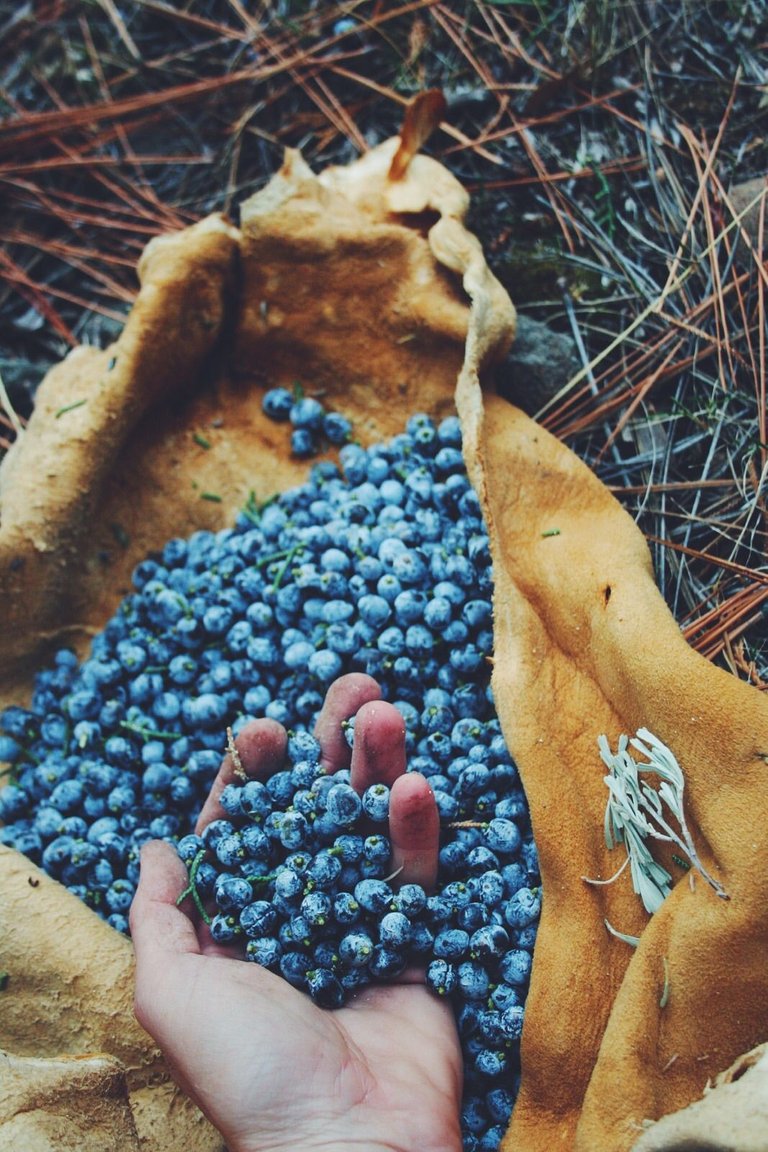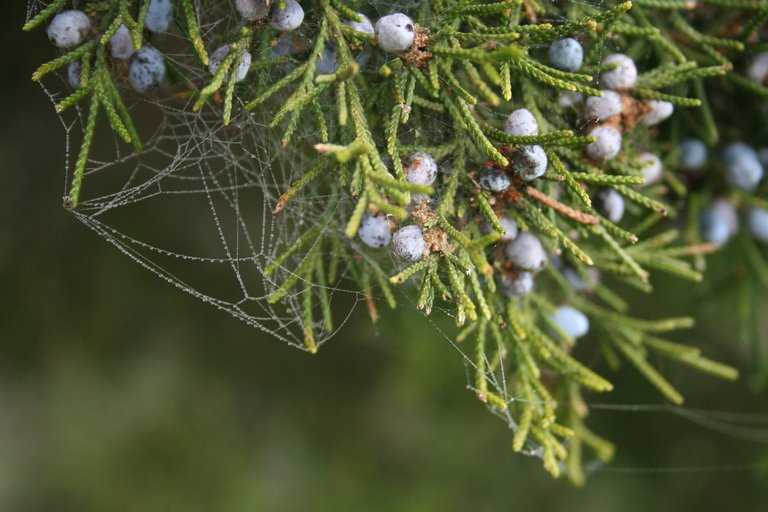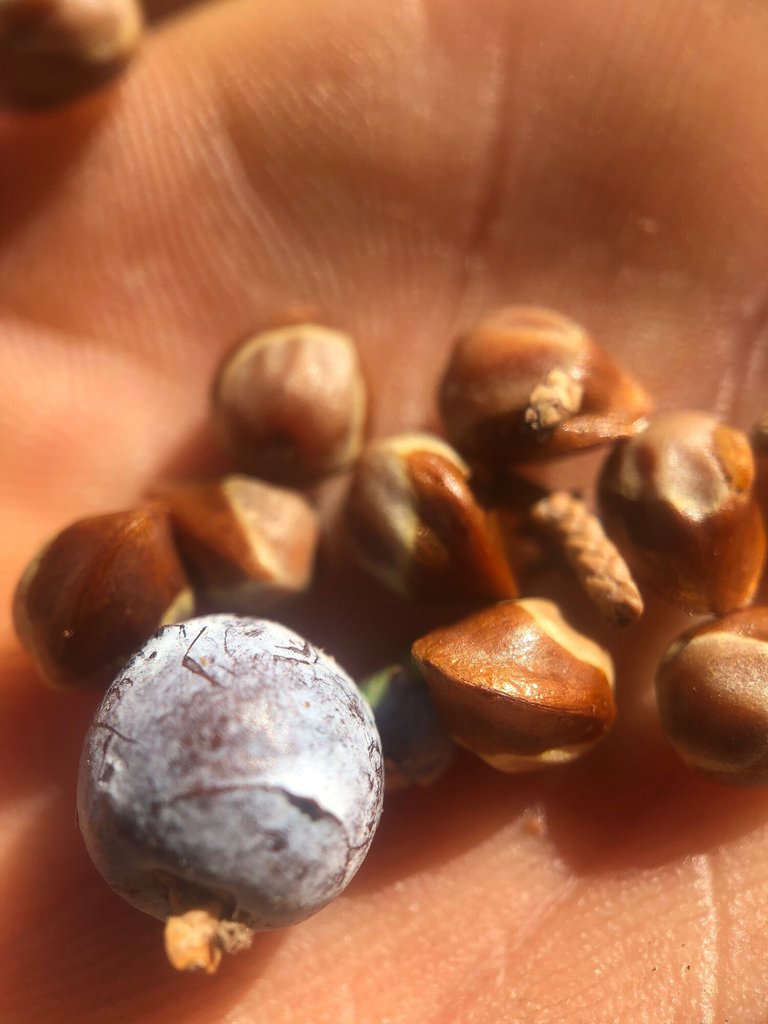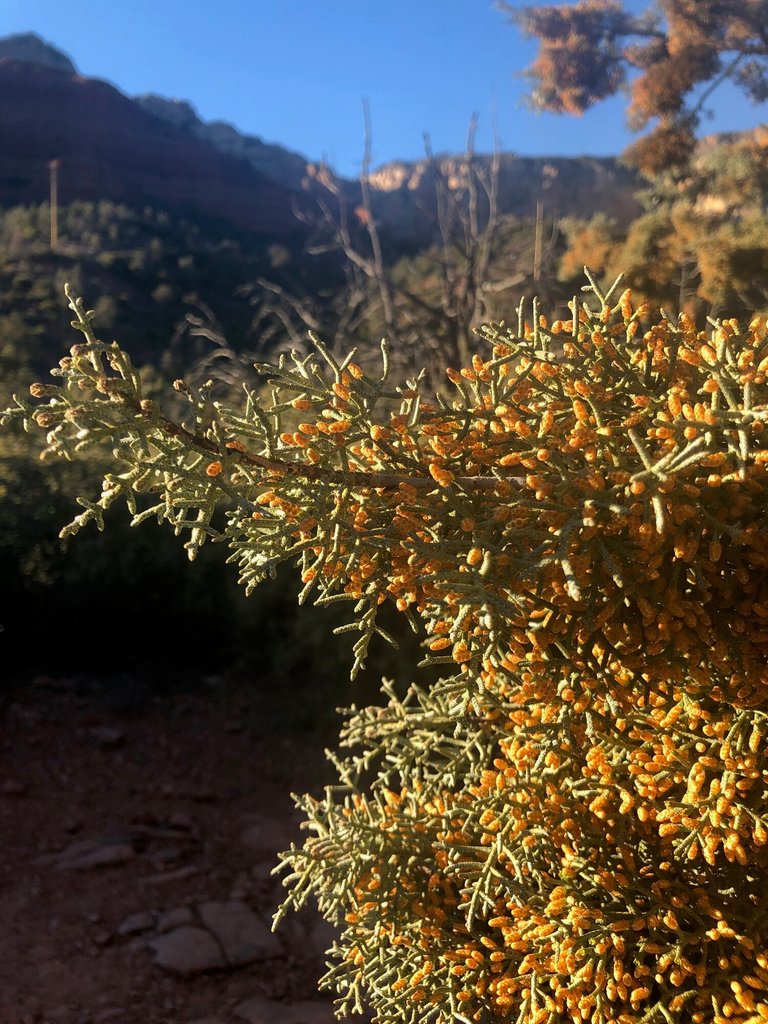So, back in 2018, I wrote an extensive plant profile on Juniper.
I do independent research on the road as an amateur botanist, herbalist and naturalist and through my travels I have gathering information about different ecologies and plants.

I have primarily studied in North America but have spent a little time out of the states. I have done research about related plants out of the states though, so some of my Juniper research applies worldwide.
I first published this on my blog at http://www.ofsedgeandsalt.com but I just updated the profile this winter after teaching an online class on the topic.
I want to share it here, but it will be in multiple parts because it is VERY long and extensive. Maybe I'll but my writings in a book one day?

(Juniperus virginiana)
Juniperus genus
Junipers are in the Juniperus genus of the Cypress family.
Junipers are resilient and versatile and are generally abundant where they grow. Junipers can be big trees, medium sized woody shrubs or found growing closer to the ground as a smaller woody shrub. They can grow at pretty high elevations or low elevations and in extreme climates of hot or cold. They can be found in wet areas or dry areas. Each species has its preference though, according to the climate of where they grow. Junipers in the west of Turtle Island can grow in areas as extreme as rocky outcrops, or vast open deserts that don’t get much rain. In the east of Turtle Island, the species that grows there can be in the forest, field or mountain top, but prefers to not be in pools of water or deep forest shade. The Junipers of the northern boreal forests tend to hug the open areas or grow under conifer trees.
The Southwestern and Western U.S. has some of the most Juniper diversity found anywhere, several species come together in a eco-zones where Juniper thrives.
Juniper can have needle-like or scale-like leaves. Needle-like leaves are most commonly found on younger plants and then the needle-like leaves shift into scale-like leaves as the plant ages. Juniper communis retains the needle-like leaves into maturity. I’m sure there is an adaptive advantage to having these different leaf types.
The mature scaled-leaves tend to be rounded in shape (vs. flattened like Thujas for example).

Junipers tend to be male or female (dioecious) or both (monoecious). Some species tend toward dioecious, some towards monoecious but often Junipers can change sexes from year to year. How fun! Male trees can appear a golden color at a distance during the time when they release their pollen due to their golden pollen cones. Some species of Juniper release pollen late in the fall, others in the winter and early spring. Some species do this more than one time a year, depending on the conditions. The pollen can cause allergic reactions in some, as is the case for other plants in the Cypress plant family, as well. The growth shape of the Juniper branches and leaves is a way to distinguish certain species, as well as the shade green-blue of the leaves. Take note here too that often younger plants have a different colored leaf than mature trees!
Juniper berries are not technically berries but rather coated seed cones with scales that are usually blue when mature, but berry-like in appearance. These berry-like cones contain seeds, and often the number of seeds inside the fleshy scaled coating can help ID the Juniper species. But many Juniper species have the same number of seeds inside of the berry-like cone. The size, color and appearance of these berry-like cones can also be an indicator of the species. Some are fat and round, some have little ‘knob-like’ protrusions, some are tiny and miniscule. I’ve tasted different Juniper berries (I will say berry here but you know what I mean) all over the U.S. and they vary drastically in flavor as well. Juniper berries are edible and medicinal, and would fall more into the medicine category with more moderate use as food. The berries are dark blue at maturation, and are often light blue to white before this time and with the look of a yeasty glaucous sheen on the surface. The ripening time of Juniper berries varies, from half a year to a year or more between rounds. That glaucous sheen also is the presence of yeast, an important fact to note when considering how humans have interacted with this fruit for food and medicine all over the globe.
The bark is usually brown or gray, and sometimes brownish red when young. Often the bark is vertical like forming groves that can make bark come off in peeling strips. Different species have different bark characteristics and some species are pretty uniquely different like Alligator Juniper Juniperus deppeana for example, which is found in just the Southwest and Mexico, and has a more scaled-like bark. Bark is another way to distinguish different Juniper species. On older and and more worn trees, the bark can be tough and the tree’s growth twisted and gnarled.
It’s important to note here that some species are easily mixed up with Junipers if not paying attention, like Arizona Cypress Cupressus arizonica for example in the Southwest and Mexico or other Cypress plant family members. Note here, Arizona Cypress’ bark is quite different than Junipers and is reddish brown, almost resembling Madrone or Manzanita in some instances.

(Arizona Cypress)
As I mentioned earlier, and will mention again, many plants in the Cypress family can be easy to mix up, and Junipers can easily be mixed up for other plants in the same family or even plants in other Conifer families and common names can make that also confusing.
It’s also important to remember the somewhat toxic plant Yew, Taxus spp. could potentially get confused with Juniper especially when it is in its needled form.
Sometimes folks say that Juniper berries are toxic. Generally they are not but apparently, the species Juniperus sabina is more toxic than other species of Juniper and should not be consumed. I keep seeing this written, though I don’t know the science, and it might be worth looking into more.
Like I mentioned before, most Junipers will thrive in a variety of different climates and soil conditions. Fire suppression has generally increased the populations of Juniper species in all of the ranges where they grow. Junipers catch flame easily with their low hanging branches and hot burning foliage. The way this fire relationship looks in a specific location is different depending on the ecology and history of land management in that place. Other plants thrive in the wake of regular fire, historically set by humans on purpose to increase plant and animal habitat and for hunting, or fire occurred by lightening mostly in the west. When indigenous folks were allowed to do their traditional burn tending of the landscapes across Turtle Island, Juniper’s place in the environment looked different. Fire suppression has made some species seem ‘invasive’ in the eyes of western science and conservation, seemingly ‘crowding out’ other species, but in fact our land use decisions and not taking indigenous land management practices seriously has caused an increase in Juniper populations.
Juniper for the most part also thrives in our human era of climate change and warming weather, save for maybe Alligator Juniper which has a very small range in the Southwest. This thriving while Pines and other species suffer, makes it seem like a nuisance, but I propose we re-think how we see this thriving. Also, Junipers being often a first succession species after disturbance has them coming up thick or are some of the first, which is a nuisance to folks who want to use the land for farming or ranching. Also, Junipers seem to be ‘encroaching’ on the habitat of other native plant communities in areas where Piñon Juniper forest types are dominant and were cut down en masse by settlers historically for mining, smelting or clearing for attempting to farm. I write more about this in my Piñon plant profile.
Our perception of ideal baselines for what plant communities should look like is often skewed by the interpretation of writings by the first white settlers, usually what we set as a baseline for ‘pre-contact’ and our disregard for indigenous land management practices culturally. Keep in mind too, that Juniper ranges when studied over deep time, fluctuated drastically with the ice ages and never came back in the same areas in the same ways necessarily, and often didn’t move north to south in response to ice ages but east to west.
The many species of Juniper that exist around the world have craft and medicine traditions in Europe, Africa, the Middle East and parts of Asia and as well as in parts of Turtle Island where it is found. Juniper has been associated with some of the earliest humans settlements excavated. This is something to think about when considering the ecological and cultural significance of this plant in deep time.